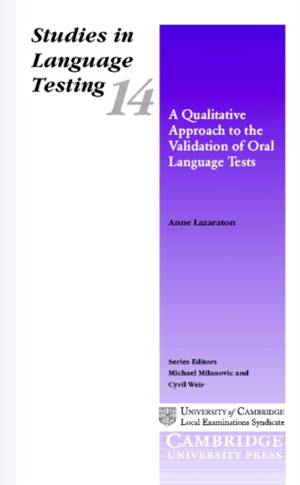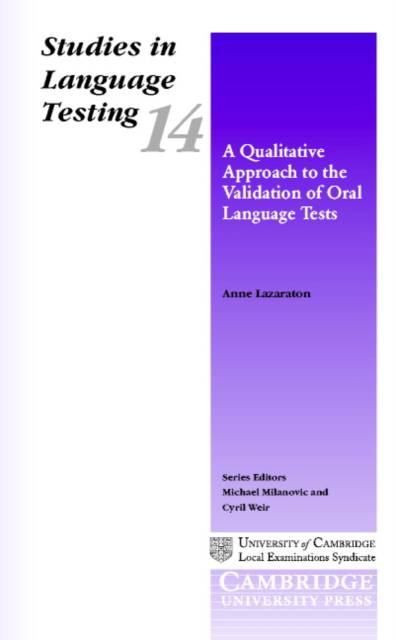
Je cadeautjes zeker op tijd in huis hebben voor de feestdagen? Kom langs in onze winkels en vind het perfecte geschenk!
- Afhalen na 1 uur in een winkel met voorraad
- Gratis thuislevering in België vanaf € 30
- Ruim aanbod met 7 miljoen producten
Je cadeautjes zeker op tijd in huis hebben voor de feestdagen? Kom langs in onze winkels en vind het perfecte geschenk!
- Afhalen na 1 uur in een winkel met voorraad
- Gratis thuislevering in België vanaf € 30
- Ruim aanbod met 7 miljoen producten
Zoeken
A Qualitative Approach to the Validation of Oral Language Tests
Anne Lazaraton, Ucles, Lazaraton Anne Lazaraton
€ 124,95
+ 249 punten
Omschrijving
Language testers have generally come to recognize the limitations of traditional statistical methods for validating oral language tests. They have begun to consider more innovative approaches to test validation, approaches that promise to illuminate the assessment process itself, rather than just assessment outcomes (i.e., ratings). One such approach is conversation analysis (or CA), a rigorous empirical methodology developed by sociologists, which employs inductive methods in order to discover and describe the recurrent, systematic properties of conversation, including sequential organization, turn-taking, repair, preference structure, and topic management. CA offers a systematic approach for analysing spoken interaction from a qualitative perspective, allowing one to make observations about a stretch of talk while at the same time interacting with it. This book provides language testers with a background in the conversation analytic framework and a fuller understanding of what is entailed in using conversation analysis in the context of oral language test validation.
Specificaties
Betrokkenen
- Auteur(s):
- Uitgeverij:
Inhoud
- Aantal bladzijden:
- 240
- Taal:
- Engels
- Reeks:
- Reeksnummer:
- nr. 14
Eigenschappen
- Productcode (EAN):
- 9780521002677
- Verschijningsdatum:
- 18/07/2002
- Uitvoering:
- Paperback
- Formaat:
- Trade paperback (VS)
- Afmetingen:
- 162 mm x 228 mm
- Gewicht:
- 376 g

Alleen bij Standaard Boekhandel
+ 249 punten op je klantenkaart van Standaard Boekhandel
Beoordelingen
We publiceren alleen reviews die voldoen aan de voorwaarden voor reviews. Bekijk onze voorwaarden voor reviews.









